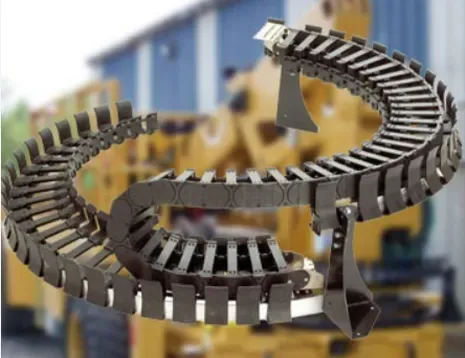cable drag chain
Understanding Cable Drag Chains Essential Components for Efficient Cable Management
In modern engineering and manufacturing, efficient cable management has become a significant concern. With the increasing complexity of machinery, electrical systems, and automation technologies, the need for organized cable systems is paramount. One of the most effective solutions for this is the use of drag chains, commonly referred to as cable drag chains. These components provide a practical and efficient way to protect and manage cables in various applications, from industrial machinery to robotics.
What is a Cable Drag Chain?
A cable drag chain, also known as a cable carrier or energy chain, is a system of linked segments designed to guide and protect cables and hoses in motion. It allows cables to move freely and smoothly while preventing kinking, abrasion, and tangling, which can lead to wear and failure. Typically constructed from durable materials such as plastic or metal, these chains come in various sizes and configurations to accommodate a wide range of cable types and diameters.
Drag chains are commonly used in applications where cables must move back and forth over a defined path. Examples include CNC machines, robotic arms, and conveyor systems. They help maintain cable integrity in environments that involve repetitive motion, impact, or exposure to harsh conditions.
Benefits of Using Cable Drag Chains
1. Protection of Cables One of the most significant advantages of cable drag chains is their ability to protect cables from damage. By enclosing and guiding the cables, these chains prevent them from getting tangled, pinched, or crushed, reducing the risk of downtime due to cable failures.
2. Ease of Installation and Maintenance Cable drag chains offer straightforward assembly and installation processes. They often come with unique features such as split links, which allow for easy access to the cables within the chain. This design simplifies maintenance and upgrades, as technicians can quickly enter and modify the wiring without dismantling the entire setup.
3. Space Optimization In many industrial settings, space is at a premium. Drag chains help manage cables efficiently, reducing clutter while ensuring that every cable has a designated space. This organization not only improves aesthetics but also enhances safety by minimizing trip hazards.
cable drag chain

4. Fluid Movement Designed to accommodate continuous motion, cable drag chains facilitate the smooth movement of cables and hoses. They allow for a controlled radius and guide the cables accurately, resulting in minimized wear and tear, which extends the life of both cables and machinery.
5. Versatile Applications Cable drag chains are incredibly versatile and can be used across various industries, including manufacturing, automotive, aerospace, and robotics. Their adaptability makes them a favorite choice among engineers and designers looking for reliable cable management solutions.
Choosing the Right Cable Drag Chain
When selecting a cable drag chain, several factors should be considered
- Size and Shape The size of the chain must fit the dimensions of the cables it will carry. Additionally, the shape of the chain can impact its flexibility and movement capabilities.
- Material Depending on the application, the material choice can greatly affect durability. For instance, chains made of high-strength plastic may be suitable for lighter applications, while metal chains may be required for heavy-duty tasks.
- Environmental Conditions The environmental factors, such as exposure to chemicals, extreme temperatures, or dirt, should also influence the selection of a drag chain.
- Cable Type Different types of cables (power, data, pneumatic hoses) may require different drag chain designs. Ensuring that the chain can accommodate the specific types of cables used in the application is critical.
In conclusion, cable drag chains are an integral part of modern cable management systems, providing a robust solution for protecting and organizing cables in motion. Their ability to optimize space, ease maintenance, and enhance performance makes them an essential component across various industries. As technology continues to evolve, the design and functionality of cable drag chains will undoubtedly progress, further meeting the demands of complex machinery and automation systems.








